
Margaret Dumont was an American stage and film actress. She is best remembered as the comic foil to the Marx Brothers in seven of their films; Groucho Marx called her "practically the fifth Marx brother."

Devil's Cub is a Georgian romance novel written by Georgette Heyer. Set in 1780, it is the sequel to These Old Shades (1926). The book was published in 1932, and has not been out of print since. It is one of Heyer's most popular novels.

Beauty and the Beast is a Disney stage musical with music by Alan Menken, lyrics by Howard Ashman and Tim Rice, and a book by Linda Woolverton. Adapted from Walt Disney Pictures' Academy Award-winning 1991 animated feature musical film of the same name – which in turn had been based on the classic French fairy tale by Jeanne-Marie Leprince de Beaumont – Beauty and the Beast tells the story of an unkind prince who has been magically transformed into an unsightly creature as punishment for his selfish ways. To revert into his true human form, the Beast must learn to love a bright, beautiful young lady who he has imprisoned in his enchanted castle before it is too late.

Marie-Louise O'Murphy, also variously called Mademoiselle de Morphy, La Belle Morphise, Louise Morfi or Marie-Louise Morphy de Boisfailly, was the youngest lesser mistress of King Louis XV of France, and the model for François Boucher's painting The Blonde Odalisque, also known as The Resting Girl.
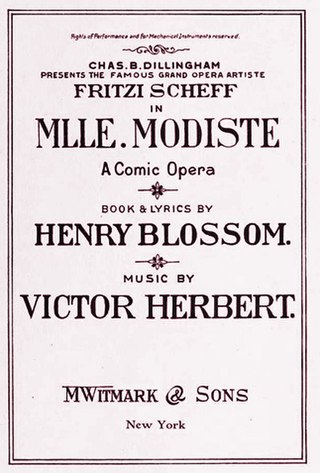
Mlle. Modiste is an operetta in two acts composed by Victor Herbert with a libretto by Henry Blossom. It concerns hat shop girl Fifi, who longs to be an opera singer, but who is such a good hat seller that her employer, Mme. Cecil, discourages her in her ambitions and exploits her commercial talents. Also, Fifi loves Etienne de Bouvray, who returns her love, but his uncle, Count Henri, opposes their union. The operetta features the song "Kiss Me Again".

The Quaker Girl is an Edwardian musical comedy in three acts with a book by James T. Tanner, lyrics by Adrian Ross and Percy Greenbank, and music by Lionel Monckton. In its story, The Quaker Girl contrasts dour Quaker morality with Parisienne high fashion. The protagonist, Prudence, is thrown out of her house by her quaker parents for drinking a glass of champagne. Later, in Paris, her simple grey dress and bonnet become the height of fashion.
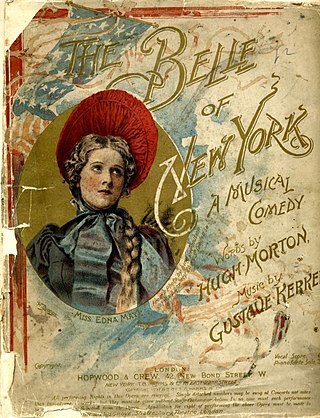
The Belle of New York is a musical comedy in two acts, with book and lyrics by Hugh Morton and music by Gustave Kerker, about a Salvation Army girl who reforms a spendthrift, makes a great sacrifice and finds true love.

Les p'tites Michu is an opérette in three acts, with music by André Messager and words by Albert Vanloo and Georges Duval. The piece is set in Paris in the years following the French Revolution and depicts the complications ensuing after the identities of two girls become confused in their infancy.

Miss Hook of Holland is an English musical comedy in two acts, with music and lyrics by Paul Rubens with a book by Austen Hurgon and Rubens. The show was produced by Frank Curzon and opened at the Prince of Wales Theatre on 31 January 1907, running for a very successful 462 performances. It starred Harry Grattan and Isabel Jay.

Monsieur Beaucaire is a romantic opera in three acts, composed by André Messager. The libretto, based on the 1900 novel by Booth Tarkington, is by Frederick Lonsdale, with lyrics by Adrian Ross. The piece premiered at the Prince of Wales Theatre in Birmingham, England, on 7 April 1919, before opening at the Prince's Theatre in London under the management of Frank Curzon on 19 April 1919 and transferring to the Palace Theatre on 29 July 1919, for a successful run.
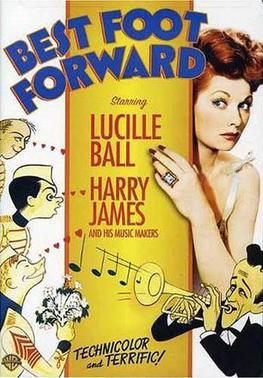
Best Foot Forward is a 1943 American musical film adapted from the 1941 Broadway musical comedy of the same title. The film was released by Metro-Goldwyn-Mayer, directed by Edward Buzzell, and starred Lucille Ball, William Gaxton, Virginia Weidler, Chill Wills, June Allyson, Gloria DeHaven, and Nancy Walker.

Kiss Me Again is a 1931 American pre-Code musical operetta film filmed entirely in Technicolor. It was originally released in the United States as Toast of the Legion late in 1930, but was quickly withdrawn when Warner Bros. realized that the public had grown weary of musicals. The Warner Bros. believed that this attitude would only last for a few months, but, when the public proved obstinate, they reluctantly re-released the film early in 1931 after making a few cuts to the film.

Isabelle Urquhart, also known as Belle Urquhart, was an American contralto and actress, noted for her performances in comic opera and musical comedy.
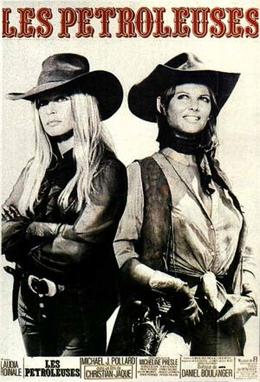
The Legend of Frenchie King or Petroleum Girls is a 1971 French, Spanish, Italian and British international co-production western comedy film directed by Christian-Jaque and starring Claudia Cardinale and Brigitte Bardot.
Pierre Victor Théophile Bertin was a French stage and film actor. In 1948, he starred in the film The Lame Devil under Sacha Guitry.
Kiss the Boys Goodbye is a 1941 comedy film directed by Victor Schertzinger and starring Mary Martin, Don Ameche and Oscar Levant. It is based on a play by Clare Boothe Luce which was inspired by the search for an actress to play Scarlett O'Hara in the film version of Gone with the Wind. The score, under the musical direction of Victor Young, includes the title song and "Sand in My Shoes," both by Frank Loesser and Victor Schertzinger.

Folies Bergère de Paris is a 1935 American musical comedy film produced by Darryl Zanuck for 20th Century Films, directed by Roy Del Ruth and starring Maurice Chevalier, Merle Oberon and Ann Southern. At the 8th Academy Awards, the “Straw Hat” number, choreographed by Dave Gould, won the short-lived Academy Award for Best Dance Direction, sharing the honor with “I've Got a Feelin' You're Foolin'” from Broadway Melody of 1936. The film, based on the 1934 play The Red Cat by Rudolph Lothar and Hans Adler, is a story of mistaken identity, with Maurice Chevalier playing both a music-hall star and a business tycoon who resembles him. This was Chevalier’s last film in Hollywood for twenty years, and reprised familiar themes such as the straw hat and a rendering of the French song "Valentine". This is also the last film to be distributed by Twentieth Century Pictures before it merged with Fox Film in 1935 to form 20th Century Fox.
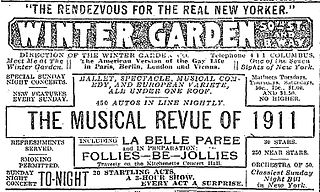
La Belle Paree was a musical revue that launched the legitimate theatre career of Al Jolson. The book was by Edgar Smith, music by Jerome Kern and Frank Tours and lyrics by Edward Madden. Billee Taylor provided additional music and lyrics, and M. E. Rourke and Frederick Day provided additional lyrics. It premiered on Broadway in 1911. The musical is set in Paris, France.

Good Times was a popular 1920 Broadway musical extravaganza, with music by Raymond Hubbell and a book by R. H. Burnside. Produced by Charles Dillingham, it debuted on August 9, 1920 at the Hippodrome in New York City and ran for 456 performances, the longest run for the 1920–21 season. It was sixth of Dillingham's elaborate spectacles at the Hippodrome.
Denise Holstein is an Auschwitz concentration camp survivor and Holocaust witness, who was liberated on 15 April 1945. As a Holocaust witness, Holstein tells her story in two books and in a documentary made by a student from the Lycée Corneille in Rouen. For almost fifty years, Holstein never spoke about her life before writing about it. As a Holocaust witness, Holstein visits school children, to describe and share her experiences.



















